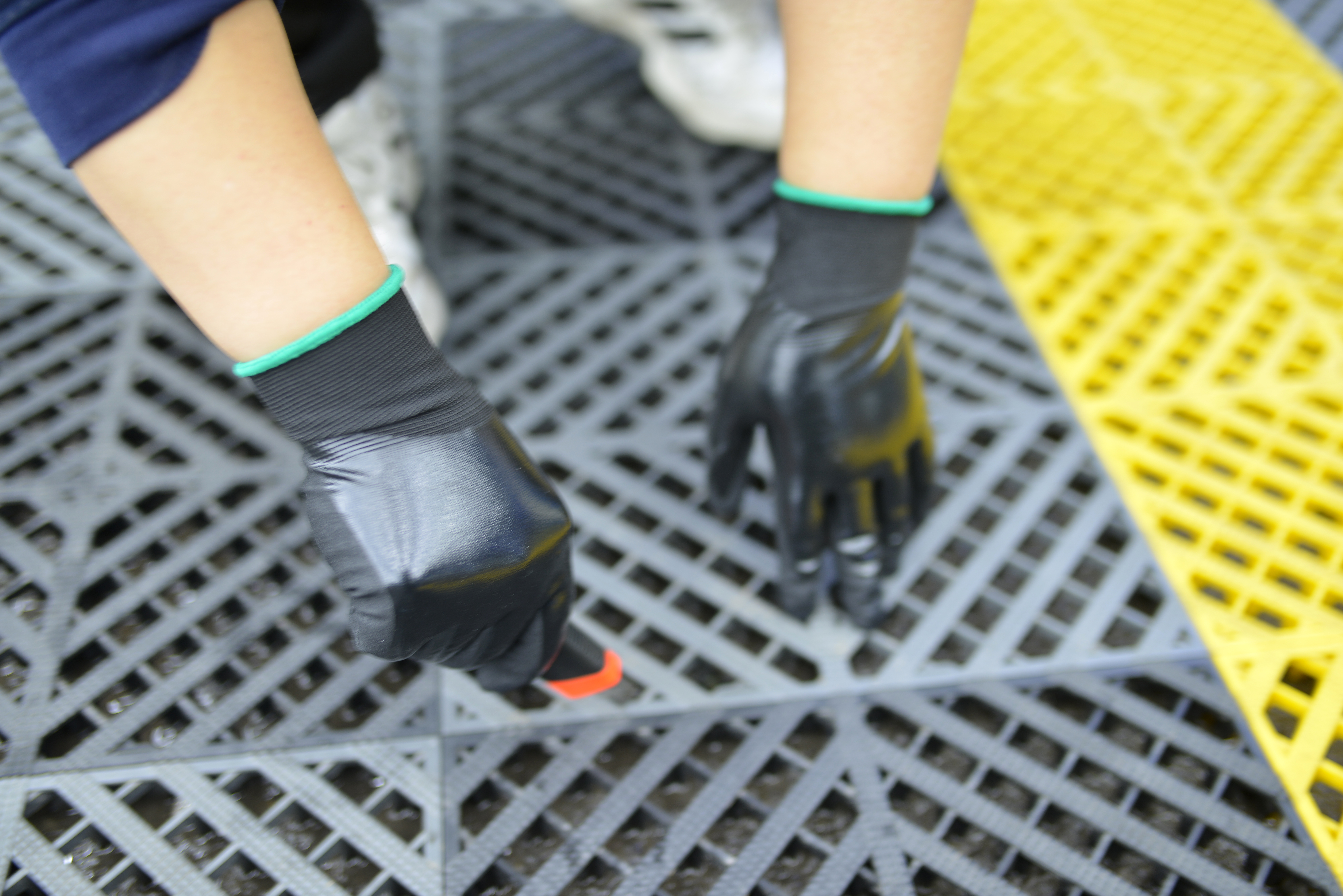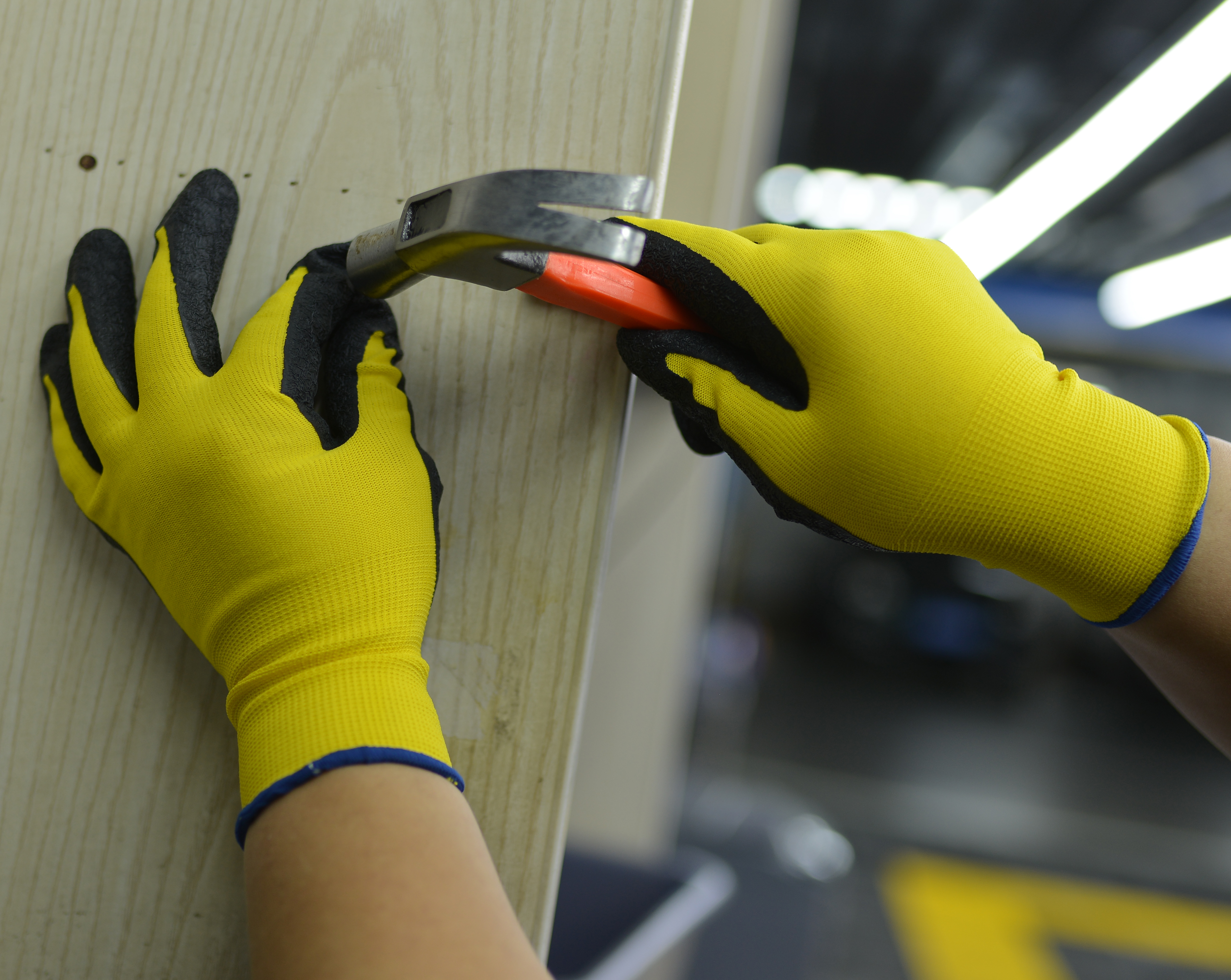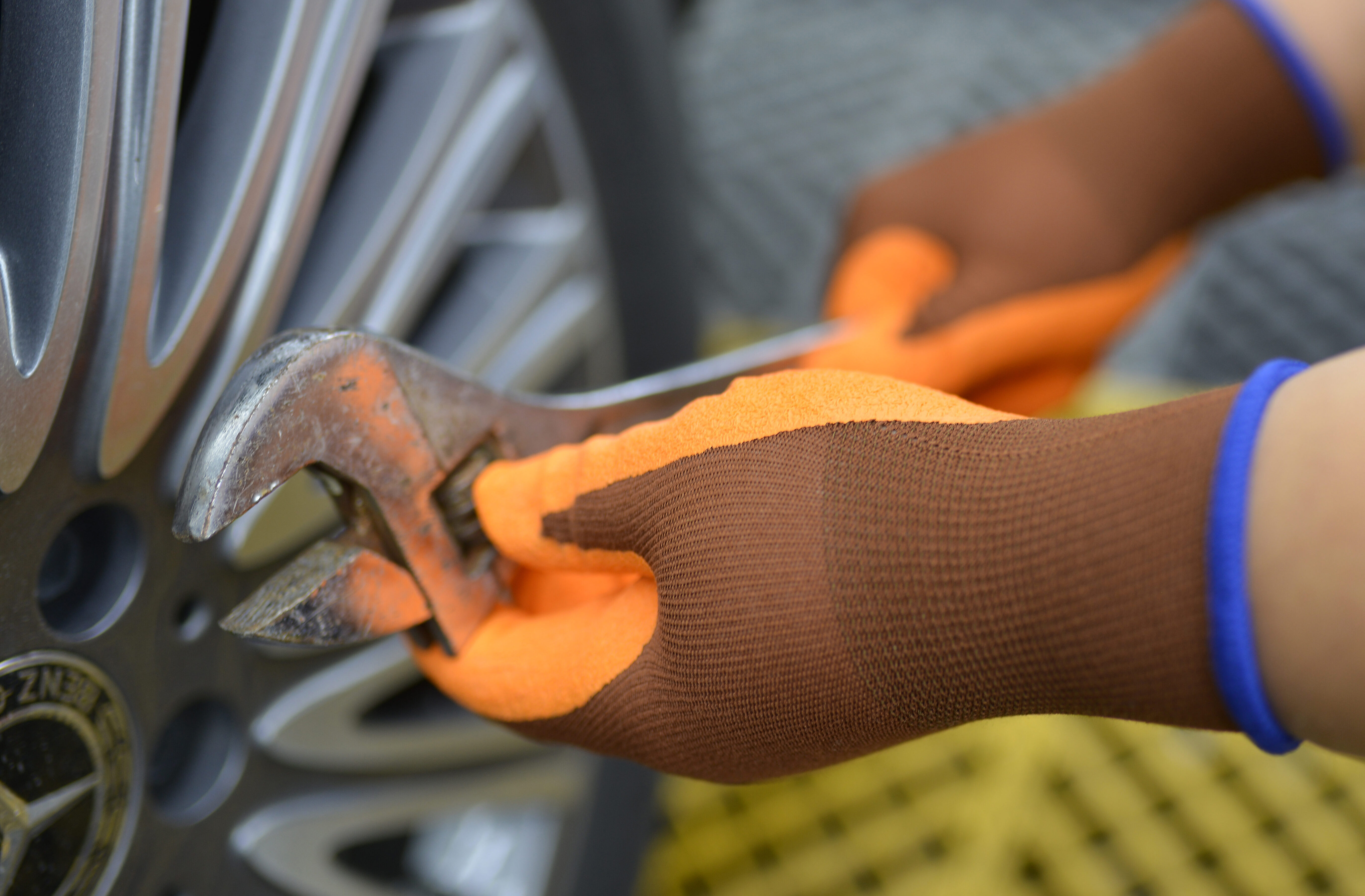The construction industry is often associated with danger and risk. Injuries are a common occurrence, and to avoid unnecessary accidents and trouble, most individuals equip themselves with specialized personal protective equipment—gloves being one of them. Below, we will give you a comprehensive introduction to the common types of gloves used in construction settings.

Cotton Gloves / Knitted Gloves
Cotton or knitted gloves are made from high-quality cotton fibers or yarn. They absorb sweat and moisture, offer excellent softness and breathability, reduce hand discomfort caused by friction, and support prolonged operations. They effectively provide mechanical protection, preventing skin damage and hazards from dirt or small debris. These gloves are suitable for handling heavy construction materials like bricks, stones, and metals. Additionally, they offer a stable grip in wet or greasy environments, helping you hold tools or materials securely and preventing slippage.
Moreover, cotton/knitted gloves are cost-effective compared to other types of gloves. At an affordable price, you can get a pair that offers reliable and effective hand protection.

Nitrile-Coated Gloves
Nitrile-coated gloves are made by dipping high-performance materials such as cotton, polyester, or nylon into nitrile synthetic rubber. Compared to cotton/knitted gloves, nitrile-coated gloves offer better and stronger protective performance and greater durability, ensuring the gloves’ longevity is not compromised.
In addition, nitrile-coated gloves are resistant to oils, solvents, chemicals, and various liquids. During construction, substances like cleaners, paints, lubricants, and degreasers may irritate or harm the skin. Nitrile-coated gloves effectively prevent these substances from coming into contact with your skin, thereby reducing the risk of chemical burns or allergic reactions. They also withstand strong friction and abrasion. When handling sharp objects such as rebar, nails, or broken glass, they offer a degree of puncture resistance—an especially important feature on construction sites.

Latex-Coated Gloves
Latex-coated gloves are manufactured similarly to nitrile-coated gloves, using high-performance fiber materials like cotton, polyester, or nylon. The only difference is the coating material—latex instead of nitrile.
Latex-coated gloves are suitable for any common construction work environment, especially in jobs requiring high flexibility and precision, such as electrical installation or assembling fine components. On-site construction tasks often involve moisture, grease, or dust. Latex gloves prevent these substances from reaching your hands while maintaining breathability. Their smooth surface helps block dirt and oil from penetrating, keeping your hands clean—making them ideal for hygiene-sensitive environments such as renovation or site cleanup.
Maintaining hygiene is crucial for many construction tasks. Latex-coated gloves provide an effective barrier to prevent contact with unsanitary substances and reduce dust and grime intrusion.
The only downside is that latex gloves are prone to causing allergic reactions. To avoid potential harm to your body, it’s recommended to opt for nitrile-coated gloves instead.

Cut-Resistant Gloves
As the name suggests, cut-resistant gloves are designed to protect your hands from sharp objects like saws, blades, glass, or metal edges. They come in various materials, typically made from high-performance, high-strength fabrics such as Kevlar, HPPE, stainless steel wire, and ultra-high-molecular-weight polyethylene.
During construction, cutting and grinding are very common tasks—such as cutting wood, stone, metal, and concrete. Sharp surfaces and debris from steel, glass, bricks, and metal plates can easily injure your hands. In the initial demolition stages, materials like bricks, slabs, and rebar often have sharp edges, increasing the risk of injury during removal. Additionally, various cutting tools are frequently used on construction sites, posing a serious risk to unprotected hands.

Summary
The above gloves are useful across various construction applications. They allow you to complete a range of tasks—from small-scale jobs to large projects—such as welding, plumbing, landscaping, and carpentry.
You should never underestimate the potential danger of sharp tools and materials. Fortunately, gloves offer an effective solution to help you avoid serious injuries. They are comfortable to wear, versatile in use, compliant with safety regulations, cost-effective, and can boost productivity. Investing in high-quality work gloves is essential to ensure you can work safely and confidently.
If you need gloves for construction environments, Aibon offers a wide selection that meets safety standards and delivers excellent protection. Don’t compromise on safety—invest in high-quality work gloves today!
How to Measure Glove Sizes – Source: AIBON
Latex gloves– Source: AIBON
Safety gloves– Source: AIBON
Working gloves– Source: AIBON

